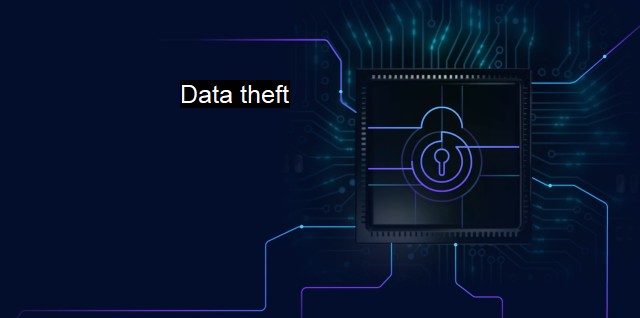What is Data theft?
Exploring the Impact of Data Theft on Businesses: Strategies for Effective Cybersecurity Management
Data theft, often referred to as data breach, occurs when unauthorized entities illegally obtain and exploit data, compromising sensitive information. This invasion in the realm of cybersecurity and antivirus typically results in data loss and can have crucial implications for both individuals and organizations. This sensitive information that becomes the target of malicious influences can range from an individual's social security number or bank information to all types of intellectual property, trade secrets, or proprietary business information owned by organizations.In order to comprehend data theft, it's crucial to first understand the broader context of cybersecurity and antivirus. Cybersecurity encompasses strategies, processes, and technologies designed to safeguard systems, networks, and program data from digital threats. It primarily aims to preserve the accessibility, integrity, and confidentiality of information, thereby shielding it from illegal access, damage, or theft. Antivirus, on the other hand, is software specifically designed to detect and eliminate malware like viruses, ransomware, and other malicious codes, it forms a key element of cybersecurity mechanisms.
Data theft transpires in numerous ways, and extraordinary measures are required to mitigate such risks in the cybersecurity landscape. One common technique employed by cybercriminals is “phishing,” where scam emails are utilized to trick people into surrendering private details. Another format involves hacking networks to infringe upon user accounts, often employing various identity theft methodologies to obtain access without detection. Spyware, malware, and ransomware are other popular tools used by criminals to invade systems surreptitiously and pilfer essential data.
The repercussions of data theft are severe and can lead to substantial financial losses, tarnished reputations, and extensive legal implications. For an individual, the loss of private data may result in identity theft, fraud, or financial losses. For businesses, the theft of confidential information could lead to severe competitive disadvantage or hefty regulatory penalties. Besides, restoring the integrity of the infiltrated systems could be time-consuming and costly.
An effective response to data theft depends on robust cybersecurity measures incorporating upfront defenses such as secure firewalls, regularly updated antivirus software, strong encryptions, and a well-layered security architecture. Businesses can implement procedures for regular assessments, monitoring, and audit of their security statuses, as well as employ security information and event management (SIEM) systems to get real time analysis of security alerts. employee training plays a significant role in data security. Since employees are often the weakest link in security, equipping them with knowledge to recognize and handle potential threats can significantly mitigate risks of data theft.
Antivirus software continues to play a crucial part in protecting systems from data theft. As the frontline soldiers, these softwares shield operating systems from malicious malware that can invisibly infiltrate, extract data, or render the system non-functional until a ransom is paid, termed as "ransomware attacks". Antivirus softwares are evolving along with advancements in technology and are now bundled as part of total security solutions, incorporating a gamut of protections against various security threats.
Cybersecurity planning must always stay dynamic, adapting to ever-changing scenarios, especially in this digitized era where new threats related to data theft constantly arise. In the pursuit of improving online privacy, bifurcated focus on strengthening both preventive and detective controls in cybersecurity is tenet to the effectiveness against data theft. Given that the nature and vector of threats keep oscillating, the only solution is to equip oneself with updated knowledge, smart technologies, and resilience planning. We are cohabitant in an era where our reliance on digital information is at its zenith. Couching this truth in mind, securing it has become a matter of utmost priority.
Data theft is a vital cybersecurity concern, prominent in the contemporary, interconnected world. The severe implications it poses necessitate constant vigilance, preventive actions, appropriate responsiveness to mitigate risk, and recover promptly in case of a breach. Antivirus plays a crucial role as part of the resolution, and therefore, understanding how these key factors interrelate in the realm of cybersecurity is vital for safe and secure cyber operations.

Data theft FAQs
What is data theft?
Data theft refers to the illegal act of stealing confidential or private data from an individual or organization, usually for financial gain or to cause harm.What are the consequences of data theft?
The consequences of data theft can be severe, including financial losses, damage to reputation, legal action, and loss of customer trust. It can also lead to identity theft, fraud, and other cyber crimes.How can antivirus software help prevent data theft?
Antivirus software can help prevent data theft by detecting and blocking malware, such as viruses, trojans, and spyware, that can be used to steal sensitive information. It can also alert users to phishing scams and other online threats.What steps can individuals and organizations take to protect against data theft?
To protect against data theft, individuals and organizations should implement strong security measures, such as using antivirus software, regularly updating operating systems and software, using strong passwords, avoiding public Wi-Fi, and limiting access to sensitive data. It is also important to educate users about the risks of data theft and how to prevent it.| | A | | | B | | | C | | | D | | | E | | | F | | | G | | | H | | | I | | | J | | | K | | | L | | | M | |
| | N | | | O | | | P | | | Q | | | R | | | S | | | T | | | U | | | V | | | W | | | X | | | Y | | | Z | |
| | 1 | | | 2 | | | 3 | | | 4 | | | 7 | | | 8 | | |||||||